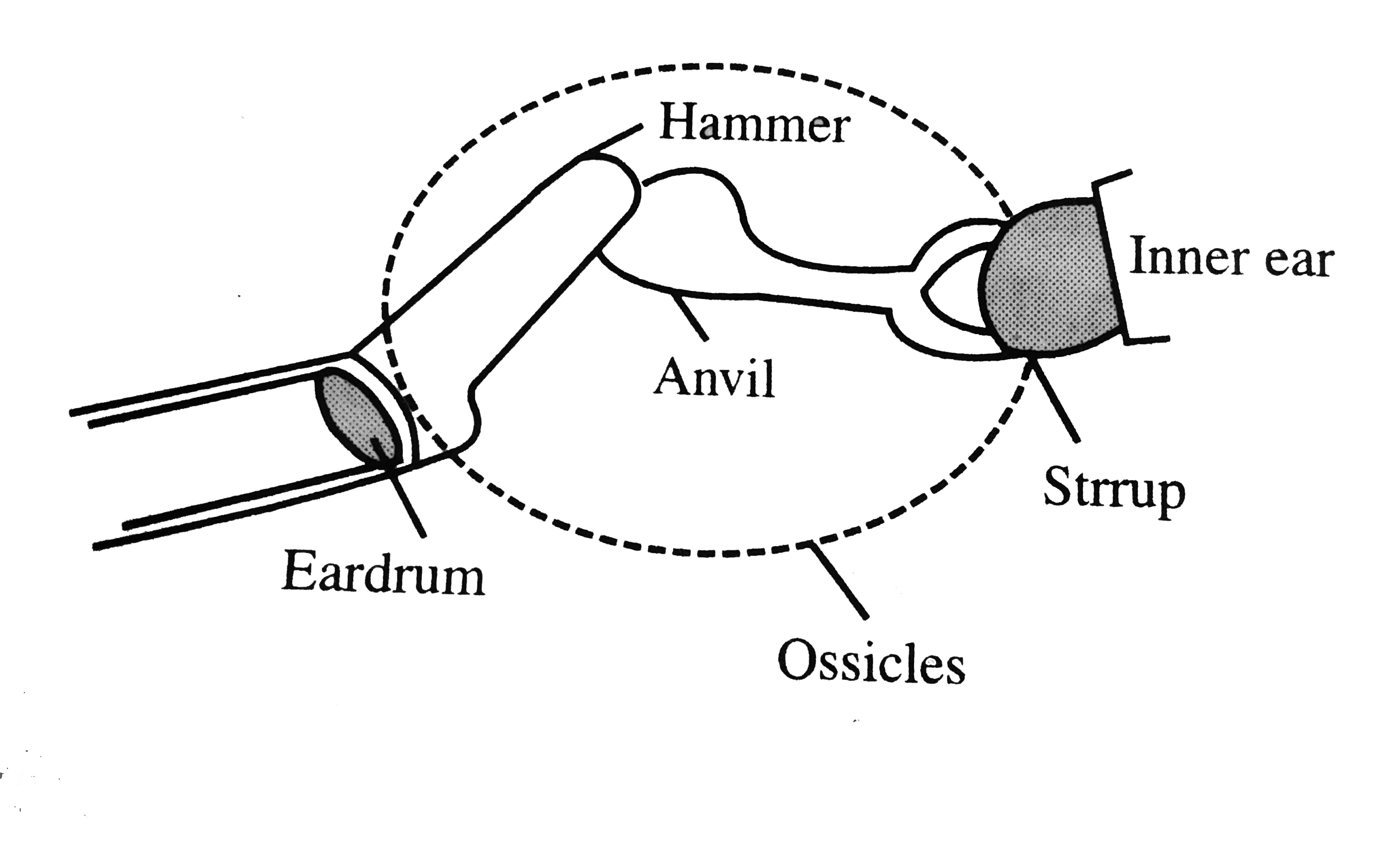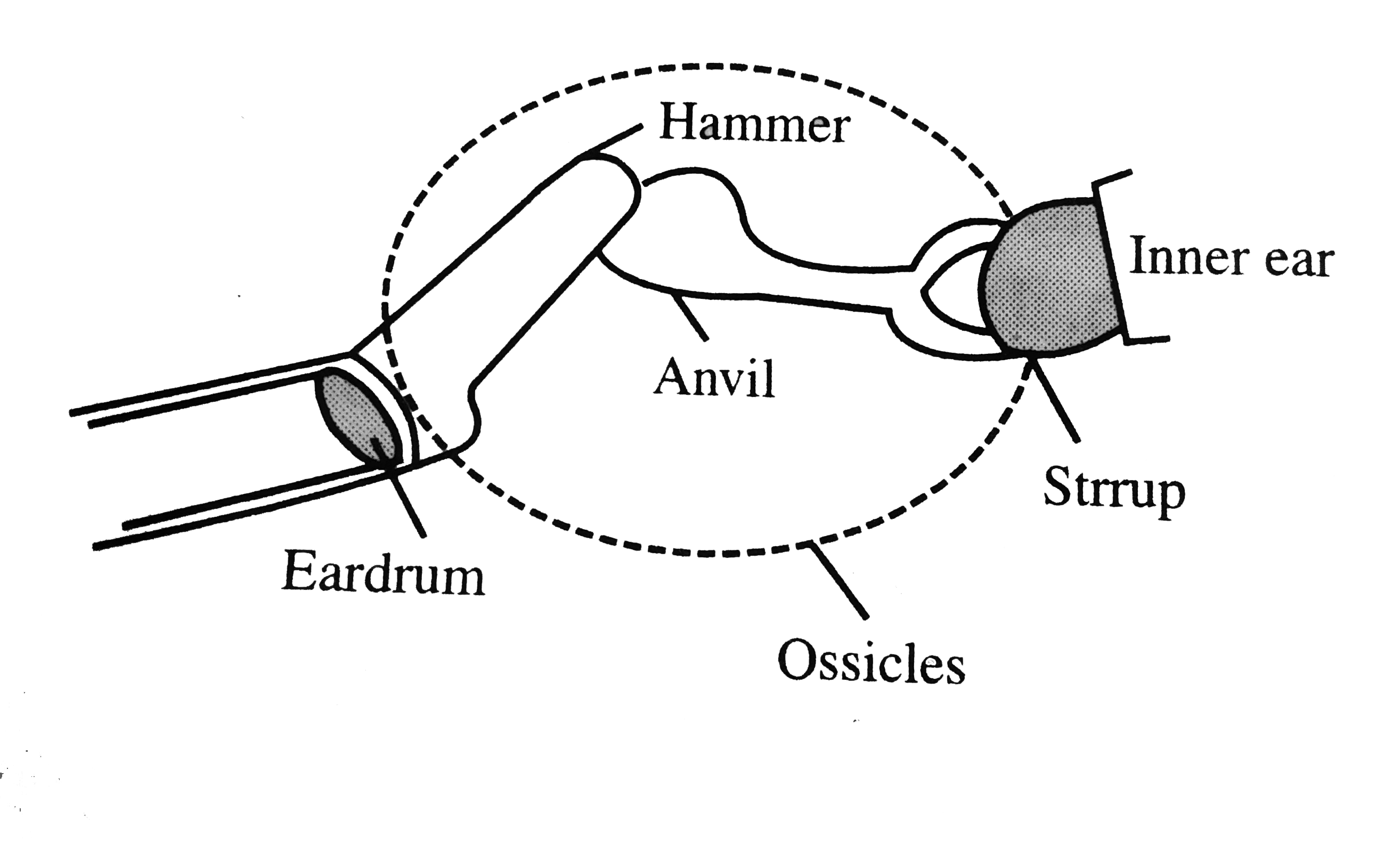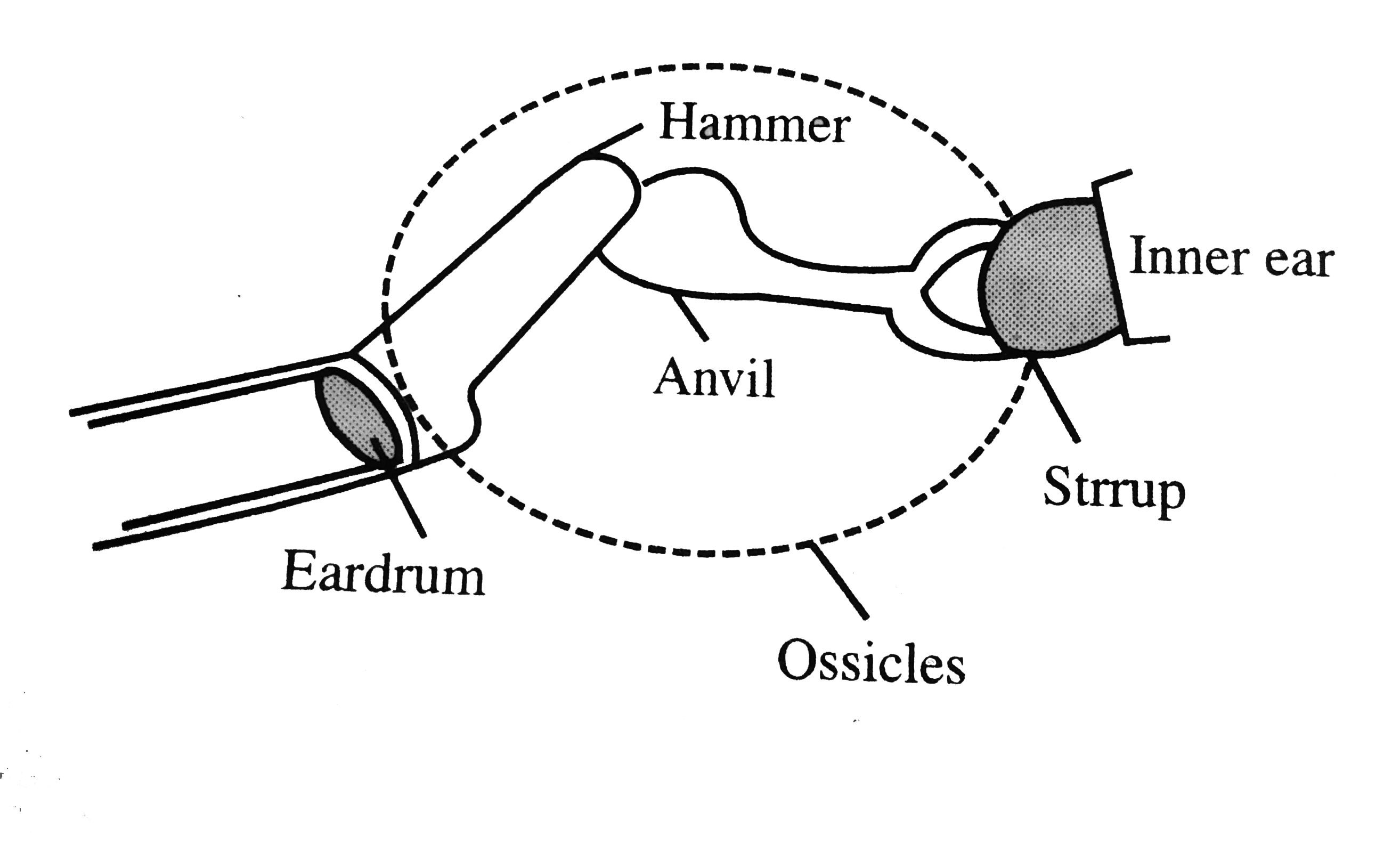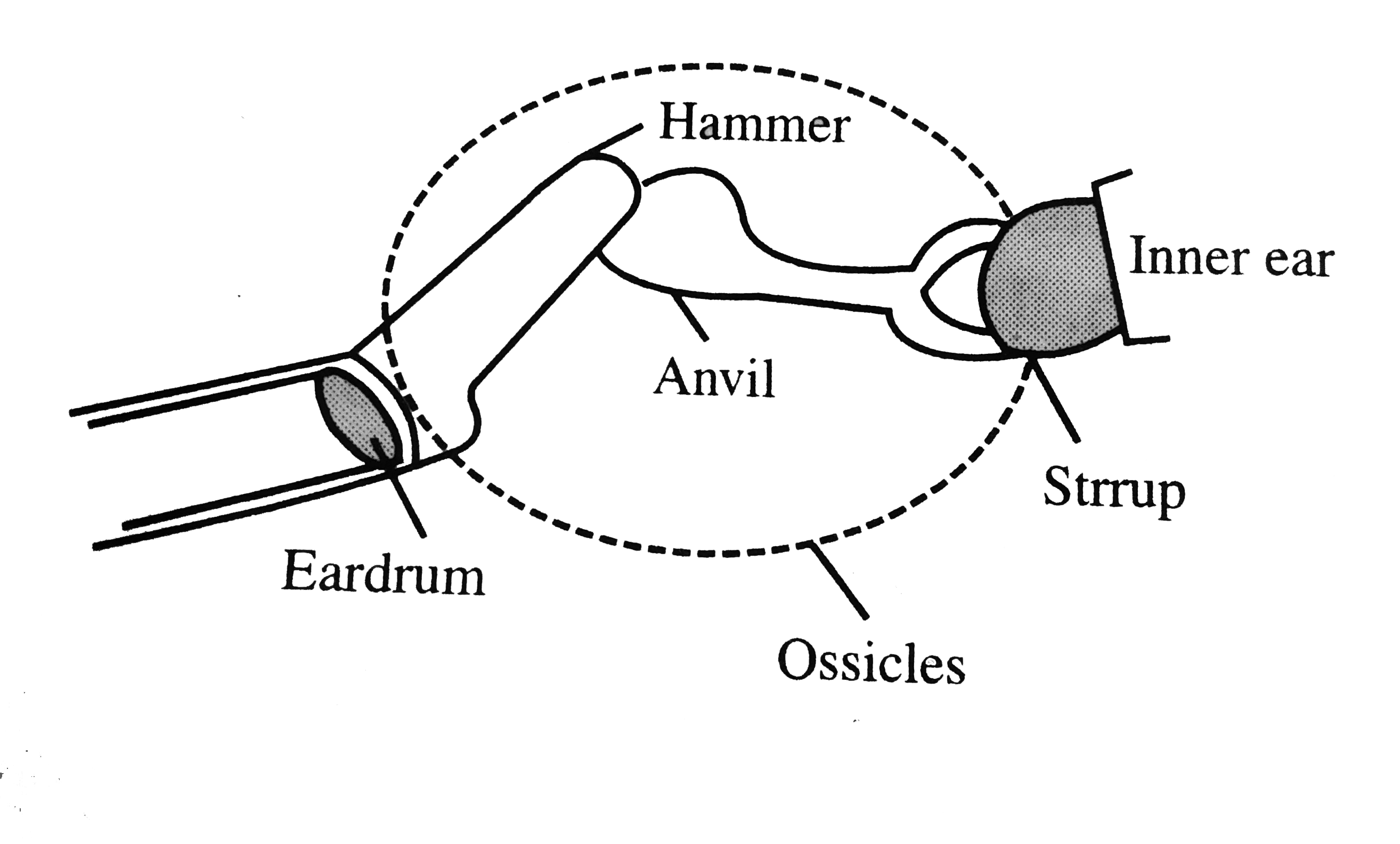[A] : Our inner ear contains sense organs for balance movement of fluid over hair cells in the semicircular canals and gives us a sense of dynamic equilibrium.
[R]: Inner ear contains Ca003 granules (otoliths) resting on hair cells. The movement of these granules gives us a sense of static equilibrium.
If both A and R are true and R is the correct explanation of A
If both A and R are true but R is not the correct explanation of A
If A is true and R is false
If both A and R are false
The correct Answer is:B
Step by step video & image solution for [A] : Our inner ear contains sense organs for balance movement of fluid over hair cells in the semicircular canals and gives us a sense of dynamic equilibrium. [R]: Inner ear contains Ca003 granules (otoliths) resting on hair cells. The movement of these granules gives us a sense of static equilibrium. by Biology experts to help you in doubts & scoring excellent marks in Class 12 exams.
Updated on:21/07/2023Topper's Solved these Questions
Similar Questions

When a sound wave enters the ear, it sets the eardrum into oscillation, which in turn causes oscillation of 3 tiny bones in the middle ear called ossicles. This oscillation is finally transmitted to the fluid filled in inner portion of the ear termed as inner ear, the motion of the fluid disturbs hair cells within the inner ear which transmit nerve impulses to the brain with the information that a sound is present. The theree bones present in the middle ear are named as hammer, anvil and stirrup. Out of these the stirrup is the smallest one and this only connects the middle ear to inner ear as shown in the figure below. The area of stirrup and its extent of connection with the inner ear limits the sensitivity of the human ear consider a person's ear whose moving part of the eardrum has an area of about 50mm2 and the area of stirrup is about 5mm2. The mass of ossicles is negligible. As a result, force exerted by sound wave in air on eardum and ossicles is same as the force exerted by ossicles on the inner ear. Consider a sound wave having maximum pressure fluctuation of 4×10−2Pa from its normal equilibrium pressure value which is equal to 105Pa. Frequency of sound wave in air is 332ms. Velocity of sound wave in fluid (present in inner ear) is 1500ms. Bulk modulus of air is 1.42×105Pa. Bulk modulus of fluid is 2.18×109Pa.
Q. If the person is using an hearing aid, which increase the sound intensity level by 30 dB, then by what factor the intensity of given sound wave change as perceived by inner ear?
View Solution
When a sound wave enters the ear, it sets the eardrum into oscillation, which in turn causes oscillation of 3 tiny bones in the middle ear called ossicles. This oscillation is finally transmitted to the fluid filled in inner portion of the ear termed as inner ear, the motion of the fluid disturbs hair cells within the inner ear which transmit nerve impulses to the brain with the information that a sound is present. The theree bones present in the middle ear are named as hammer, anvil and stirrup. Out of these the stirrup is the smallest one and this only connects the middle ear to inner ear as shown in the figure below. The area of stirrup and its extent of connection with the inner ear limits the sensitivity of the human ear consider a person's ear whose moving part of the eardrum has an area of about 50mm2 and the area of stirrup is about 5mm2. The mass of ossicles is negligible. As a result, force exerted by sound wave in air on eardum and ossicles is same as the force exerted by ossicles on the inner ear. Consider a sound wave having maximum pressure fluctuation of 4×10−2Pa from its normal equilibrium pressure value which is equal to 105Pa. Frequency of sound wave in air is 332ms. Velocity of sound wave in fluid (present in inner ear) is 1500ms. Bulk modulus of air is 1.42×105Pa. Bulk modulus of fluid is 2.18×109Pa.
Q. Find the displacement amplitude of given sound wave in the fluid of inner ear.
View Solution
Knowledge Check
Assertion:Vestibular apparatus helps us in maintaining balance of body and posture.
Reason:Due to the arrangement of semicircular canals of vestibular apparatus, movement of head in any direction will stimulate sensory cells to maintain dynamic equilibrium.AIf both assertion and reason are true and reason is the correct explanation of assertion.BIf both assertion and reason are true but reason is not the correct explanation of assertion.CIf assertion is true but reason is false.DIf both assertion and reason are false.What we understand by conflict is associated with our notion of change. There are religious traditions in the world, Buddhism being the most prominent, which regards change as the natural quality of life. The conflict arises when one accepts the passing state as permanent and clings to it desperately. Man suffers because he resists what is beyond resistance. Such is the law of change and the nature of suffering. The acceptance of this law need not be a passive resignation to what is happening around us, on the contrary, is it is a kind of active seeing, which involves attention. Nothing could be a better definition of dharma than this concentrated spirit of attentiveness, a kind of night vigil bom out of inner illumination. The act of sacrifice involves in the most primary sense of the word the voluntary act of renouncing, giving up, but this is merely half the meaning, the negative half. The second half is that which is begotten and realised. Both are integral to the act of sacrifice - the blessed grace of fulfilment through the act of negation: There is nothing static and repetitive about tradition. It is enriched by the continuous endeavour to internalise that which is the other, the alien, the outside, till it reaches a point where the boundaries merge. The world ceases to be something outside a kind of screen reflecting the images projected on it by man himself. There is however, no guarantee that the traditional societies permanently preserve this sacred sense of connectedness, if that were so, they would no: have been exposed to all sorts of anguished misgivings, doubts and uncertainties described with such poetic vigour in ancient epics like the Mahabharata and Iliad. The relation of the artist to his world is not that of a viewer against the viewed. It reminds us of two different statements, one of Paul Klee, the other of Coomaraswami which specify the nature of the divine in art. Klee writes in his journal that roaming around in a forest, he sometimes had a strange feeling that it is not only he who is watching the trees, but that he himself is being watched by them. I am sure a tribal artist of Bastar will corroborate the feeling of Klee. Coomaraswami says about the essential meaning of art, a view based on the traditional way of looking at the world. "If it is to nourish as plants are nourished and grow in suitable soils, it is to the understanding and not to feelings that an appeal must be made." How outrageous such words will sound to a modern secularist can easily be imagined. And yet for once they unashamedly proclaim what tradition is all about. It is a frank refusal to regard man as the source of supreme and sovereign power, a belief which increasingly became so dominant since the European Renaissance. There is a way shown by all traditions, a way of withdrawal from the egoistic conception of the self, an egoistic self which is the battleground of all conflicts. It is not a withdrawal of self to non-self, but from a state of exile to one of homecoming. Science and technology might have made deep incursions into the traditional modes of life and may have pushed it to the brink of extinction but it is so deeply ingrained within the texture of man's consciousness that the sense of tradition survives even after the extinction of traditional modes of existence. In the darkest hour of stress and crisis, man turns to it, posing a moral challenge to the acquisitive and aggressive ideologies of the modern world. The patience and perseverance of a Dalai Lama in the face of heavy odds and the incalculable suffering of his people are as much a profound source of moral embarrassment to the Chinese rulers as at one time the non-violent Satyagraha of Gandhi was to the British empire: two major figures of modern time who directly drew inspiration from their traditions to evolve the most innovative forms of resistance against evil.
Attentiveness:Apaying close attentionBdeterminationClack of confidenceDnone of themWhat we understand by conflict is associated with our notion of change. There are religious traditions in the world, Buddhism being the most prominent, which regards change as the natural quality of life. The conflict arises when one accepts the passing state as permanent and clings to it desperately. Man suffers because he resists what is beyond resistance. Such is the law of change and the nature of suffering. The acceptance of this law need not be a passive resignation to what is happening around us, on the contrary, is it is a kind of active seeing, which involves attention. Nothing could be a better definition of dharma than this concentrated spirit of attentiveness, a kind of night vigil bom out of inner illumination. The act of sacrifice involves in the most primary sense of the word the voluntary act of renouncing, giving up, but this is merely half the meaning, the negative half. The second half is that which is begotten and realised. Both are integral to the act of sacrifice - the blessed grace of fulfilment through the act of negation: There is nothing static and repetitive about tradition. It is enriched by the continuous endeavour to internalise that which is the other, the alien, the outside, till it reaches a point where the boundaries merge. The world ceases to be something outside a kind of screen reflecting the images projected on it by man himself. There is however, no guarantee that the traditional societies permanently preserve this sacred sense of connectedness, if that were so, they would no: have been exposed to all sorts of anguished misgivings, doubts and uncertainties described with such poetic vigour in ancient epics like the Mahabharata and Iliad. The relation of the artist to his world is not that of a viewer against the viewed. It reminds us of two different statements, one of Paul Klee, the other of Coomaraswami which specify the nature of the divine in art. Klee writes in his journal that roaming around in a forest, he sometimes had a strange feeling that it is not only he who is watching the trees, but that he himself is being watched by them. I am sure a tribal artist of Bastar will corroborate the feeling of Klee. Coomaraswami says about the essential meaning of art, a view based on the traditional way of looking at the world. "If it is to nourish as plants are nourished and grow in suitable soils, it is to the understanding and not to feelings that an appeal must be made." How outrageous such words will sound to a modern secularist can easily be imagined. And yet for once they unashamedly proclaim what tradition is all about. It is a frank refusal to regard man as the source of supreme and sovereign power, a belief which increasingly became so dominant since the European Renaissance. There is a way shown by all traditions, a way of withdrawal from the egoistic conception of the self, an egoistic self which is the battleground of all conflicts. It is not a withdrawal of self to non-self, but from a state of exile to one of homecoming. Science and technology might have made deep incursions into the traditional modes of life and may have pushed it to the brink of extinction but it is so deeply ingrained within the texture of man's consciousness that the sense of tradition survives even after the extinction of traditional modes of existence. In the darkest hour of stress and crisis, man turns to it, posing a moral challenge to the acquisitive and aggressive ideologies of the modern world. The patience and perseverance of a Dalai Lama in the face of heavy odds and the incalculable suffering of his people are as much a profound source of moral embarrassment to the Chinese rulers as at one time the non-violent Satyagraha of Gandhi was to the British empire: two major figures of modern time who directly drew inspiration from their traditions to evolve the most innovative forms of resistance against evil.
Voluntary:AThe cult was supported by voluntary contribution.BHis life could be saved from voluntary death.CThere are three kinds of muscles voluntary, involuntary and cardiac.DVoluntary arbitration is always followed in France.

When a sound wave enters the ear, it sets the eardrum into oscillation, which in turn causes oscillation of 3 tiny bones in the middle ear called ossicles. This oscillation is finally transmitted to the fluid filled in inner portion of the ear termed as inner ear, the motion of the fluid disturbs hair cells within the inner ear which transmit nerve impulses to the brain with the information that a sound is present. The theree bones present in the middle ear are named as hammer, anvil and stirrup. Out of these the stirrup is the smallest one and this only connects the middle ear to inner ear as shown in the figure below. The area of stirrup and its extent of connection with the inner ear limits the sensitivity of the human ear consider a person's ear whose moving part of the eardrum has an area of about 50mm2 and the area of stirrup is about 5mm2. The mass of ossicles is negligible. As a result, force exerted by sound wave in air on eardum and ossicles is same as the force exerted by ossicles on the inner ear. Consider a sound wave having maximum pressure fluctuation of 4×10−2Pa from its normal equilibrium pressure value which is equal to 105Pa. Frequency of sound wave in air is 332ms. Velocity of sound wave in fluid (present in inner ear) is 1500ms. Bulk modulus of air is 1.42×105Pa. Bulk modulus of fluid is 2.18×109Pa.
Q. Find the pressure amplitude of given sound wave in the fluid of inner ear.
View Solution
When a sound wave enters the ear, it sets the eardrum into oscillation, which in turn causes oscillation of 3 tiny bones in the middle ear called ossicles. This oscillation is finally transmitted to the fluid filled in inner portion of the ear termed as inner ear, the motion of the fluid disturbs hair cells within the inner ear which transmit nerve impulses to the brain with the information that a sound is present. The theree bones present in the middle ear are named as hammer, anvil and stirrup. Out of these the stirrup is the smallest one and this only connects the middle ear to inner ear as shown in the figure below. The area of stirrup and its extent of connection with the inner ear limits the sensitivity of the human ear consider a person's ear whose moving part of the eardrum has an area of about 50mm2 and the area of stirrup is about 5mm2. The mass of ossicles is negligible. As a result, force exerted by sound wave in air on eardum and ossicles is same as the force exerted by ossicles on the inner ear. Consider a sound wave having maximum pressure fluctuation of 4×10−2Pa from its normal equilibrium pressure value which is equal to 105Pa. Frequency of sound wave in air is 332ms. Velocity of sound wave in fluid (present in inner ear) is 1500ms. Bulk modulus of air is 1.42×105Pa. Bulk modulus of fluid is 2.18×109Pa.
Q. Find the displacement amplitude of given sound wave in the fluid of inner ear.
View Solution
When a sound wave enters the ear, it sets the eardrum into oscillation, which in turn causes oscillation of 3 tiny bones in the middle ear called ossicles. This oscillation is finally transmitted to the fluid filled in inner portion of the ear termed as inner ear, the motion of the fluid disturbs hair cells within the inner ear which transmit nerve impulses to the brain with the information that a sound is present. The theree bones present in the middle ear are named as hammer, anvil and stirrup. Out of these the stirrup is the smallest one and this only connects the middle ear to inner ear as shown in the figure below. The area of stirrup and its extent of connection with the inner ear limits the sensitivity of the human ear consider a person's ear whose moving part of the eardrum has an area of about 50mm2 and the area of stirrup is about 5mm2. The mass of ossicles is negligible. As a result, force exerted by sound wave in air on eardum and ossicles is same as the force exerted by ossicles on the inner ear. Consider a sound wave having maximum pressure fluctuation of 4×10−2Pa from its normal equilibrium pressure value which is equal to 105Pa. Frequency of sound wave in air is 332ms. Velocity of sound wave in fluid (present in inner ear) is 1500ms. Bulk modulus of air is 1.42×105Pa. Bulk modulus of fluid is 2.18×109Pa.
Q. This person (without hearing aid machine) is sitting inside a busy restaurant where average sound intensity is 3.2×10−5Wm2. How much energy in the form of sound is taken up by the person in his meal time of 1 h?
View Solution
When a sound wave enters the ear, it sets the eardrum into oscillation, which in turn causes oscillation of 3 tiny bones in the middle ear called ossicles. This oscillation is finally transmitted to the fluid filled in inner portion of the ear termed as inner ear, the motion of the fluid disturbs hair cells within the inner ear which transmit nerve impulses to the brain with the information that a sound is present. The theree bones present in the middle ear are named as hammer, anvil and stirrup. Out of these the stirrup is the smallest one and this only connects the middle ear to inner ear as shown in the figure below. The area of stirrup and its extent of connection with the inner ear limits the sensitivity of the human ear consider a person's ear whose moving part of the eardrum has an area of about 50mm2 and the area of stirrup is about 5mm2. The mass of ossicles is negligible. As a result, force exerted by sound wave in air on eardum and ossicles is same as the force exerted by ossicles on the inner ear. Consider a sound wave having maximum pressure fluctuation of 4×10−2Pa from its normal equilibrium pressure value which is equal to 105Pa. Frequency of sound wave in air is 332ms. Velocity of sound wave in fluid (present in inner ear) is 1500ms. Bulk modulus of air is 1.42×105Pa. Bulk modulus of fluid is 2.18×109Pa.
Q. With respect to information provided above, mark the correct statement.
View SolutionWhat we understand by conflict is associated with our notion of change. There are religious traditions in the world, Buddhism being the most prominent, which regards change as the natural quality of life. The conflict arises when one accepts the passing state as permanent and clings to it desperately. Man suffers because he resists what is beyond resistance. Such is the law of change and the nature of suffering. The acceptance of this law need not be a passive resignation to what is happening around us, on the contrary, is it is a kind of active seeing, which involves attention. Nothing could be a better definition of dharma than this concentrated spirit of attentiveness, a kind of night vigil bom out of inner illumination. The act of sacrifice involves in the most primary sense of the word the voluntary act of renouncing, giving up, but this is merely half the meaning, the negative half. The second half is that which is begotten and realised. Both are integral to the act of sacrifice - the blessed grace of fulfilment through the act of negation: There is nothing static and repetitive about tradition. It is enriched by the continuous endeavour to internalise that which is the other, the alien, the outside, till it reaches a point where the boundaries merge. The world ceases to be something outside a kind of screen reflecting the images projected on it by man himself. There is however, no guarantee that the traditional societies permanently preserve this sacred sense of connectedness, if that were so, they would no: have been exposed to all sorts of anguished misgivings, doubts and uncertainties described with such poetic vigour in ancient epics like the Mahabharata and Iliad. The relation of the artist to his world is not that of a viewer against the viewed. It reminds us of two different statements, one of Paul Klee, the other of Coomaraswami which specify the nature of the divine in art. Klee writes in his journal that roaming around in a forest, he sometimes had a strange feeling that it is not only he who is watching the trees, but that he himself is being watched by them. I am sure a tribal artist of Bastar will corroborate the feeling of Klee. Coomaraswami says about the essential meaning of art, a view based on the traditional way of looking at the world. "If it is to nourish as plants are nourished and grow in suitable soils, it is to the understanding and not to feelings that an appeal must be made." How outrageous such words will sound to a modern secularist can easily be imagined. And yet for once they unashamedly proclaim what tradition is all about. It is a frank refusal to regard man as the source of supreme and sovereign power, a belief which increasingly became so dominant since the European Renaissance. There is a way shown by all traditions, a way of withdrawal from the egoistic conception of the self, an egoistic self which is the battleground of all conflicts. It is not a withdrawal of self to non-self, but from a state of exile to one of homecoming. Science and technology might have made deep incursions into the traditional modes of life and may have pushed it to the brink of extinction but it is so deeply ingrained within the texture of man's consciousness that the sense of tradition survives even after the extinction of traditional modes of existence. In the darkest hour of stress and crisis, man turns to it, posing a moral challenge to the acquisitive and aggressive ideologies of the modern world. The patience and perseverance of a Dalai Lama in the face of heavy odds and the incalculable suffering of his people are as much a profound source of moral embarrassment to the Chinese rulers as at one time the non-violent Satyagraha of Gandhi was to the British empire: two major figures of modern time who directly drew inspiration from their traditions to evolve the most innovative forms of resistance against evil.
Secularist:
View Solution
